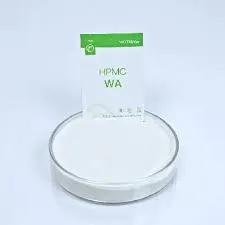
Dec . 11, 2024 09:07 Back to list
Exploring the Intersection of HPMC and CMC in Pharmaceutical Applications
Understanding the Relationship Between HPMC and CMC in Pharmaceutical Applications
In the realm of pharmaceuticals, excipients play a critical role in formulating effective and stable drug delivery systems. Hydroxypropyl Methylcellulose (HPMC) and Carboxymethyl Cellulose (CMC) are two widely used polymeric excipients that serve vital functions in various formulations. Although both are derived from cellulose, their unique properties and functionalities make them suitable for different applications in the pharmaceutical industry.
What is HPMC?
HPMC is a non-ionic, water-soluble polymer derived from cellulose. It is known for its ability to form viscous solutions, which makes it ideal for use as a thickening agent, binder, and film-forming agent in pharmaceutical formulations. The hydroxyl groups in HPMC facilitate its solubilization in water, leading to the formation of gels. This property is particularly advantageous in controlled-release formulations, where a slow and steady release of the active pharmaceutical ingredient (API) is desired.
In addition to its thickening and binding properties, HPMC is also widely used as a stabilizer in emulsions and suspensions. The capacity of HPMC to modify viscosity depending on concentration and temperature enhances the stability of pharmaceutical formulations. It is also compatible with a wide range of other excipients, facilitating its incorporation into complex formulations.
What is CMC?
Carboxymethyl Cellulose (CMC), on the other hand, is an anionic cellulose derivative. The introduction of carboxymethyl groups enhances its solubility in water and provides it with unique thickening and stabilizing properties. CMC is widely used in pharmaceutical applications, particularly in the preparation of oral and topical dosage forms. Its ability to create a gel-like consistency makes it an excellent candidate for use in suspensions and emulsions.
.
The Synergistic Benefits of HPMC and CMC
hpmc cmc

The combined use of HPMC and CMC in pharmaceutical formulations can lead to synergistic effects that enhance the overall performance of the product. When used together, these two polymers can improve the viscosity profile and stability of formulations, enabling a more controlled release of active drugs and improving patient compliance.
For instance, in the preparation of hydrophilic matrices for controlled drug release, HPMC can provide a gel-like structure to the matrix, while CMC enhances the gel's viscosity and stability. This combination is particularly useful in the development of oral tablets and granules, where maintaining consistent drug release rates is critical.
Moreover, the combination of HPMC and CMC can help tailor the rheological properties of the formulation. By adjusting the proportions of each polymer, formulators can achieve the desired viscosity and texture for a specific application. This flexibility allows for the creation of customized formulations that meet unique therapeutic needs.
Applications in the Pharmaceutical Industry
The applications of HPMC and CMC in the pharmaceutical industry are vast. In oral dosage forms, they are used as binders in tablet formulations, agents for modifying drug release rates, and stabilizers in liquid formulations. In topical formulations, they serve as thickening agents and can help improve the spreadability and adherence of creams and gels on the skin.
Furthermore, their use is not limited to conventional formulations. In the realm of nanotechnology and drug delivery, HPMC and CMC have been explored as carriers for nanoparticles and liposomes, enhancing the bioavailability of poorly soluble drugs.
Conclusion
In summary, Hydroxypropyl Methylcellulose and Carboxymethyl Cellulose are two significant excipients in pharmaceutical formulations. Their unique properties and functionalities complement each other, allowing formulators to design effective and stable drug delivery systems. As the pharmaceutical industry continues to evolve, the role of these cellulose derivatives will remain vital in developing innovative therapeutic solutions that enhance patient outcomes.
-
Versatile Hpmc Uses in Different Industries
NewsJun.19,2025
-
Redispersible Powder's Role in Enhancing Durability of Construction Products
NewsJun.19,2025
-
Hydroxyethyl Cellulose Applications Driving Green Industrial Processes
NewsJun.19,2025
-
Exploring Different Redispersible Polymer Powder
NewsJun.19,2025
-
Choosing the Right Mortar Bonding Agent
NewsJun.19,2025
-
Applications and Significance of China Hpmc in Modern Industries
NewsJun.19,2025







